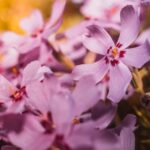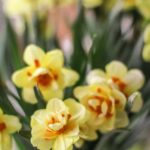Are you looking to transform your outdoor space into a stunning floral oasis? In this article, we will explore the art of flower garden layout designs and how they can elevate the beauty of your garden. Whether you’re a seasoned gardener or just starting out, this guide will provide you with valuable insights on selecting the right location, choosing the perfect flowers, and understanding soil and drainage considerations for your flower garden.
When it comes to creating a beautiful floral display, the layout design is crucial in achieving an aesthetically pleasing result. We’ll delve into the process of creating visually appealing layouts that incorporate color, texture, pathways, and focal points to enhance the overall appeal of your garden. Additionally, we’ll discuss the importance of proper maintenance and care to ensure longevity and vibrancy in your flower garden.
With our comprehensive guide, you’ll be equipped with the knowledge and inspiration needed to create a breathtaking flower garden that will be the envy of all who admire it. So let’s embark on this journey to discover the endless possibilities of flower garden layout designs and unlock the potential of your outdoor space.
Selecting the Right Location for Your Flower Garden
Assessing Sunlight and Shade
When selecting the right location for your flower garden, it is important to consider the amount of sunlight and shade that the area receives. Most flowers require at least six hours of direct sunlight each day, so it is crucial to choose a spot that meets this requirement. Take note of any trees or structures that may cast shadows on the area, as this can affect the growth and bloom of your flowers.
Considering Soil Conditions
The quality of soil in your chosen location is another factor to consider when planning your flower garden layout. Conduct a soil test to determine its composition, pH level, and drainage. Some flowers may thrive in well-drained sandy soil, while others may prefer rich, loamy soil. Understanding the soil conditions will help you select the right flowers for your garden and make any necessary amendments to improve soil quality.
Proximity to Water Source
Another important consideration in choosing a location for your flower garden is the proximity to a water source. Flowers require regular watering, especially during dry seasons, so having easy access to a water supply will make maintenance much more manageable. Whether it is a nearby hose or irrigation system, ensure that your chosen location allows for convenient watering to keep your flowers healthy and vibrant.
Choosing the Perfect Flowers for Your Garden
When it comes to creating a stunning flower garden layout design, one of the most important aspects is selecting the perfect flowers for your outdoor space. The type of flowers you choose will have a significant impact on the overall look and feel of your garden. Here are some considerations to keep in mind when choosing the perfect flowers for your garden:
Climate and Growing Conditions
Before selecting flowers for your garden, it’s essential to consider the climate and growing conditions in your area. Different flowers thrive in different environments, so it’s crucial to choose varieties that will flourish in your specific location. Take into account factors such as sunlight levels, temperature, and soil type to ensure that the flowers you select will thrive in your garden.
Color and Bloom Time
When choosing flowers for your garden, think about the color scheme you want to achieve. Consider selecting a mix of colors and varying bloom times to ensure that your garden looks vibrant and colorful throughout the growing season. Additionally, pay attention to the height and size of the flowers to create visual interest and balance within your flower bed.
Native Plants and Wildlife
Another factor to consider when choosing flowers for your garden is whether they are native plants that support local wildlife. Native plants are well-adapted to their environment and play a crucial role in providing habitat and food for pollinators such as bees, butterflies, and birds. By incorporating native plants into your flower garden layout design, you can create a vibrant ecosystem while celebrating the natural beauty of your region.
By carefully considering these factors when selecting flowers for your garden, you can create a visually stunning flower garden layout design that brings joy and beauty to your outdoor space. Whether you prefer a wildflower meadow or a formal rose garden, choosing the perfect flowers is an essential step in transforming your outdoor space into a breathtaking floral paradise.
Understanding the Importance of Soil and Drainage for Your Flower Garden
The soil and drainage in your flower garden play a crucial role in the overall health and success of your plants. The type of soil you have will directly impact the growth and development of your flowers, so it’s essential to understand the importance of soil composition. Different types of flowers thrive in different soil conditions, so it’s important to assess your soil quality before selecting which flowers to plant.
One key factor to consider is the pH level of your soil. Most flowers prefer a neutral pH level, but some may require acidic or alkaline soil. Testing your soil’s pH can easily be done with a simple at-home testing kit or by sending a sample to a local agricultural extension office. Additionally, ensuring proper drainage is equally important to prevent waterlogging which can lead to root rot and other issues.
It’s also important to consider the texture and structure of your soil. Flowers generally prefer well-draining soil that is loose and crumbly, allowing air and water to move freely through it. Improving poor drainage can be achieved by amending the soil with organic matter such as compost or perlite. By understanding these factors, you can create an optimal environment for most types of flowers to thrive.
| Soil Component | Importance |
|---|---|
| pH Level | Determines plant nutrient availability |
| Drainage | Prevents waterlogging and root rot |
| Texture, Affects air and water movement within the soil, |
Creating a Visually Appealing Flower Garden Layout Design
When planning the layout design for your flower garden, it is important to consider factors such as the size and shape of your garden space, as well as the overall aesthetic you wish to achieve. One popular approach is to create geometric patterns with flower beds, using shapes like circles, squares, or rectangles to add visual interest. Another option is to incorporate flowing, curved lines for a more natural and organic feel.
In addition to the shape of the flower beds, it’s also essential to think about the height and placement of different plants within the garden. Taller plants can be used at the back of a bed or along a fence line to provide vertical interest and create depth within the space. Meanwhile, shorter plants can be used in the front or middle of beds to fill out the design and create a cohesive look.
Color coordination is another crucial aspect of creating a visually appealing flower garden layout design. By selecting flowers with complementary or contrasting colors, you can create eye-catching displays that are sure to impress. Additionally, considering bloom times when choosing flowers can help ensure that your garden looks lively and vibrant throughout the growing season.
| Aspect | Consideration |
|---|---|
| Shape of Flower Beds | Geometric patterns vs. flowing lines |
| Plant Height and Placement | Create depth and visual interest |
| Color Coordination | Selecting complementary or contrasting colors |
Implementing Color and Texture in Your Flower Garden Design
When it comes to creating a visually stunning flower garden layout design, one of the key elements to consider is the use of color and texture. Incorporating a variety of colors and textures can help add depth and visual interest to your garden, making it a true feast for the eyes.
When choosing flowers for your garden, consider selecting plants that bloom in different colors and have varying textures. This will allow you to create a dynamic and visually appealing display that changes throughout the seasons. Additionally, pay attention to the foliage of the plants as it also adds texture and can provide visual interest even when the flowers are not in bloom.
Another way to implement color and texture in your flower garden design is by incorporating different types of landscaping materials such as rocks, mulch, or decorative stones. These elements can add contrast and dimension to your garden while also helping to define different areas within the space.
To ensure a cohesive look, it’s important to consider how colors work together in your flower garden design. You may choose to create a harmonious color scheme with complementary shades or opt for a more vibrant look with contrasting colors.
Whatever you choose, keep in mind that proper placement of color can enhance the overall aesthetic of your garden design. By carefully considering both color and texture in your flower garden layout design, you can create a beautiful outdoor space that is sure to impress anyone who visits.
Incorporating Pathways and Focal Points in Your Garden
When designing your flower garden layout, it’s important to consider the pathways and focal points that will enhance the overall aesthetic of your garden. Incorporating pathways not only adds functionality by allowing easy access to all areas of your garden but also creates a sense of flow and organization.
Focal points, on the other hand, add visual interest and draw the eye to specific areas within the garden. Here are some tips for incorporating pathways and focal points in your garden:
– **Pathways**: Choose materials for your pathways that complement the overall design of your garden, whether it be gravel, stepping stones, or brick pavers. Consider the width of the pathways to ensure they are accessible and provide enough space for traffic flow. Curved pathways can add a sense of whimsy and create a more natural feel, while straight pathways offer a more formal look.
– **Focal Points**: Focal points can be anything from a sculpture or fountain to a beautifully blooming tree or large perennial plant. Place focal points strategically throughout the garden to create visual interest and draw attention to specific areas. Consider scale when choosing focal points – it’s important that they complement rather than overwhelm the overall design of the garden.
– **Combining Pathways and Focal Points**: One effective way to incorporate both pathways and focal points is by positioning focal points at key intersections along your pathways. This allows visitors to discover these features as they navigate through your garden, adding an element of surprise and discovery to the experience.
By carefully considering how pathways and focal points fit into your flower garden layout design, you can create a visually stunning outdoor space that is both functional and aesthetically pleasing. These elements can truly elevate the beauty of your garden while providing an enjoyable experience for anyone who visits it.
Maintaining and Caring for Your Flower Garden to Ensure Longevity
Once you have designed and planted your beautiful flower garden, it is important to maintain and care for it properly to ensure its longevity. Proper maintenance will keep your garden healthy and vibrant for years to come. Here are some essential tips for maintaining and caring for your flower garden:
1. Regular Watering: Proper watering is crucial for the health of your flowers. Different types of flowers require different amounts of water, so make sure to research the specific needs of each plant. A general rule of thumb is to water deeply but infrequently, allowing the soil to dry out slightly between waterings.
2. Deadheading: Deadheading, or removing spent flowers, can encourage continuous blooming and prevent your plants from going to seed prematurely. This simple task not only keeps your garden looking tidy but also promotes new growth.
3. Weeding and Mulching: Regular weeding is important to prevent unwanted plants from competing with your flowers for nutrients and sunlight. Applying a layer of mulch around your plants can help suppress weeds while also retaining moisture in the soil.
4. Fertilizing: Providing the right nutrients to your flowers is essential for their overall health and vitality. Consider using a balanced fertilizer or organic compost to feed your plants throughout the growing season.
By following these maintenance tips, you can ensure that your flower garden continues to thrive and bring beauty to your outdoor space for years to come. Regular care and attention will result in a stunning and long-lasting flower garden that you can enjoy season after season.
Conclusion
In conclusion, the beauty of flower garden layout designs can truly transform your outdoor space into a stunning and visually appealing area. By carefully selecting the right location, choosing the perfect flowers, understanding soil and drainage needs, and implementing color and texture, you can create a beautiful garden that will bring joy and tranquility to your surroundings.
Additionally, by incorporating pathways and focal points in your garden, you can enhance its visual appeal and create a sense of flow and cohesion. These elements not only add aesthetic value but also provide practical benefits for navigating and enjoying your garden space.
Lastly, maintaining and caring for your flower garden is crucial to ensure its longevity and continued beauty. Regular maintenance, watering, pruning, and fertilizing will help your garden thrive throughout the seasons. With careful planning and ongoing care, you can create an outdoor oasis that you can enjoy for years to come. So go ahead and start planning your stunning flower garden layout design today.
Frequently Asked Questions
How Do I Layout My Flower Garden?
When laying out your flower garden, it’s important to consider the sunlight and water needs of the different plants you want to include. Start by selecting a focal point, such as a tree or statue, and then design your garden around it. Consider the color, height, and blooming season of your plants to create an appealing visual arrangement.
How Do You Arrange Plants in a Flower Garden?
When arranging plants in a flower garden, think about their growth habits and space them according to their mature size. Taller plants should be placed at the back or center of the garden to provide a backdrop for smaller plants in front. Group similar plants together for a cohesive look and consider layering different heights for visual interest.
What Is the Most Effective Garden Layout?
The most effective garden layout will ultimately depend on factors such as the size of your space, sun exposure, soil type, and climate. However, many gardeners find that a symmetrical or formal layout can be visually appealing and easy to maintain.
Consider incorporating defined pathways for easy access and maintenance, as well as utilizing complementary colors and textures in your plant choices for a cohesive overall look.

Welcome to my gardening blog! I am passionate about plants and enjoy sharing my knowledge and experiences with others. In this blog, I will write about everything related to gardening, from tips on how to get started to updates on my own garden projects.





